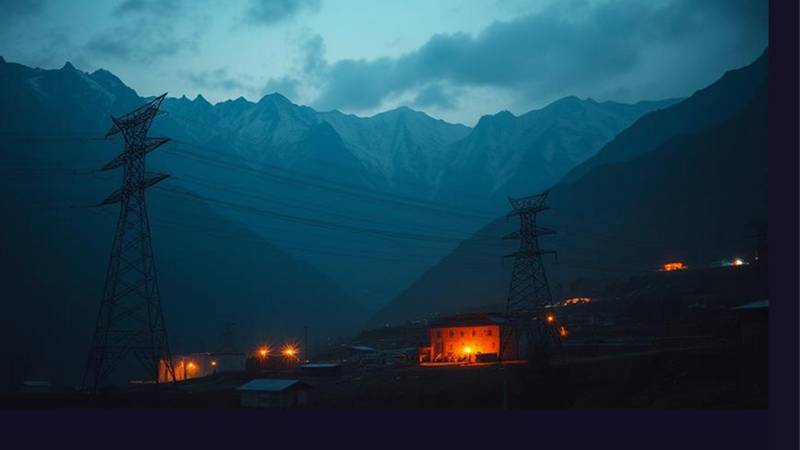
Gilgit-Baltistan, often referred to as Pakistan’s crown jewel, is renowned for its breathtaking landscapes and strategic significance. The region is abundant in minerals, water reserves, and tourism potential. Despite this immense significance, Gilgit-Baltistan remains underdeveloped and grapples with serious issues related to fundamental rights, such as energy crises, water scarcity, and inadequate education and healthcare facilities. The unfulfilled promises of development contrast sharply with these hardships, forcing people to protest for basic needs, which is a reflection of leadership failure.
Due to its high altitude and mountainous terrain, the region is considered one of the coldest areas in Pakistan, experiencing extreme cold during the winter season. The harsh weather makes life miserable, and the public remains deprived of fundamental necessities. As a citizen of Pakistan, I have personally realised how far behind the region is in terms of convenience and opportunities compared to other cities. These issues prompt many of us to leave our homes in search of necessities, enduring significant suffering in the process. Unfortunately, our government lacks the will to address this injustice and fails to properly utilise the budget allocated by the federal government. Upon reviewing the budget for 2024-25, we found that the Annual Development Programme (ADP) has been allocated Rs. 20 billion, while the Public Sector Development Programme (PSDP) allocation for the same period stands at Rs. 13.5 billion. Despite these allocations, there is little to no visible improvement in the energy sector, infrastructure, healthcare sector, and education system. The funds for development often remain underutilised or mismanaged, leaving the people to struggle with inadequate resources and harsh living conditions. Everyone is aware of these issues, yet no one is willing to take a step toward positive change.
In this modern era, energy, one of the most critical necessities, plays a vital role in daily life. From offices and businesses to education and households, almost every task depends on electricity. As noted by Ahmad Naeem, Pakistan continues to face a severe energy crisis, a longstanding issue that has persisted for years, causing significant economic losses. To address this, Independent Power Producers (IPPs) were introduced under various energy policies, aiming to boost electricity production. However, despite their presence, Pakistan’s energy sector remains inefficient and unable to meet its growing demand. This raises an important question: does Pakistan truly need IPPs, or do they worsen the crisis? Moreover, are IPPs genuine foreign direct investors, or are they a case of round-tripping FDI? These concerns pose serious challenges for the government of Pakistan. However, my primary focus here is to highlight how this crisis affects the people of Gilgit-Baltistan (GB), who suffer from severe energy shortages. When the issue was raised in the Parliament House in Islamabad, Senator Zeeshan Khanzada, a member of the committee, proposed solar energy as a viable solution, particularly for areas where hydroelectricity is not feasible.
The total installed capacity is nearly 70 MW, but in winter, only 33 MW is supplied, while 59 MW is available in summer
Nowadays, news circulating in GB media highlights that Gilgit is struggling with severe electricity issues. In winter, the region faces 19-20 hours of severe load shedding, which forces the public to take to the streets to protest and block roads. Yet, there is no sign of relief from the government or leadership, who remain silent despite the existence of numerous power stations in the region.
In Gilgit-Baltistan, there are 148 power stations built across 10 districts, with each district having more than 10 hydropower stations. Although the number of power stations is increasing, the power crisis still persists. A few of the main reasons for this are that power stations are constructed without proper R&D studies, without cost and benefit analysis, and without assessing project feasibility. Additionally, in winter, the streams freeze, causing the water flow to stop. As a result, power generation drops significantly because there isn’t enough running water to produce electricity, leading to a wastage of money.
There are 24 power stations allocated exclusively for Gilgit city, yet political elites and bureaucrats enjoy uninterrupted electricity with special privileges 24/7. Meanwhile, the general public continues to suffer from power shortages due to poor management and inefficiencies.
The total installed capacity is nearly 70 MW, but in winter, only 33 MW is supplied, while 59 MW is available in summer. This stark disparity further reflects the mismanagement and incompetence of the Water and Power Department (PWD), which is responsible for project selection and implementation. Despite having the necessary infrastructure, the absence of an effective check-and-balance system has led to widespread inefficiencies, leaving the common people in distress.
One of the key reasons for this power crisis is the seasonal fluctuation in electricity production. The Nalter Power House (Ph-IV) and (Ph-V) generate the highest electricity output throughout the year, with 16 MW and 12 MW in summer, while 7 MW and 5 MW in winter, as their production declines due to reduced water flow. In contrast, some smaller power stations experience only a slight difference in production between seasons. This imbalance in generation capacity exacerbates the crisis, plunging the city into darkness.
To address this crisis, the government could provide thermal generators as a temporary solution, but they come with a high cost, as fuel-based electricity is both expensive and unsustainable. Instead of relying on short-term fixes, the government must prioritise long-term alternatives to ensure a stable energy supply and put an end to public grievances. The world is advancing toward modernisation, and yet we are still protesting for basic necessities. Such issues paralyze daily life activities, such as online business operations, and create contradictions for students, threatening livelihoods. Even through these ongoing challenges, the administration claims that 10 MW of power has been added to the Gilgit grid in 18 months under the present government. However, these increases remain insufficient given the region’s growing energy demand and persistent shortages.
To effectively address the electricity challenges in Gilgit-Baltistan in the near future, the government should adopt liberalised energy policies that incentivise foreign investors to bring in advanced technologies for electricity production, creating competition in the energy market and encouraging multiple players to invest, ultimately improving efficiency. Furthermore, before initiating any project, conducting a cost-benefit analysis is essential to ensure the economic feasibility of that project.
Additionally, ensuring that rules and regulations are applied uniformly across all sectors of society is crucial. This would eliminate privileged access to electricity and promote fairness and transparency in the distribution system, ensuring that electricity is available to all citizens on equal terms. Lastly, beyond policy reforms, the government should focus on diversifying energy sources by expanding solar and wind projects in remote areas where traditional electricity feasibility is impossible.

